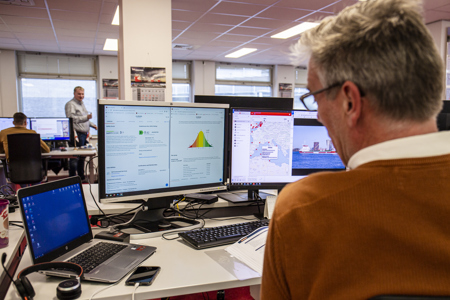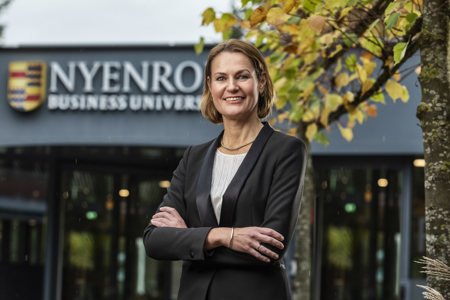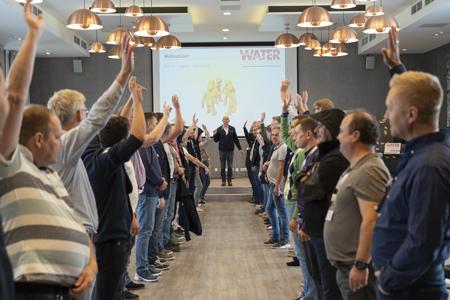
Econowind lends a ship wings
Since early this year, Ankie sports two 10-metre-high Ventifoils developed by eConowind. Under perfect wind conditions, i.e. force 6 to 7 side winds, the ship once even achieved a 20% fuel reduction. Van Dam is familiar with the figures but is cautious in his enthusiasm. “It works, that much is clear, but we’re still very much in the test phase.”
"The figures indicate that 8 to 10 percent reduction is realistic."
Frank Nieuwenhuis - eConowind
Initial results
Ankie’s propeller and the Ventifoils are fitted with sensors to collect all kinds of data. This information is linked to available data regarding routes and the wind, for example. “This gives us insight into the savings to be achieved by the Ventifoils in practice in the longer term”, explains Frank Nieuwenhuis of eConowind. “Of course we accurately calculated and tested everything beforehand, but the practical situation is often much more fickle. That’s why we’re also delighted with people like Jan van Dam. Without them, you can’t innovate the way you’d like to.”
Nieuwenhuis is pleased with the first results. “The figures indicate that 8 to 10 percent reduction is realistic.“ Though it may all require further fine-tuning. “Being a market leader is almost inherent with teething troubles. This is no different”, says Nieuwenhuis. “There were a number of points of attention mechanically speaking, and a sensor malfunctioned. Covid-19 can sometimes make it more tricky to undertake repairs, making it a longer process.”
Contributing to the future
Van Dam himself plans to go on board his Ankie very soon to try out the Ventifoils for himself. “I plan to sail,
alternating with and without Ventifoils, to see what happens to the fuel consumption. This is a great project to
be part of”, he explains enthusiastically. Nieuwenhuis nods in agreement: “The combination of a challenge, doing something good for the world and investing in a project with good future potential, makes this all very much worthwhile. How fantastic would it be if our Dutch product was the first to really take the giant steps needed in this field?”
How do the Ventofoils works?
You can compare them with a plane’s wings. The shape of the wing results in higher speed and lower pressure on the top edge, and in lower speed and higher pressure on the bottom edge. This difference in pressure is what pushes a plane up. The Ventifoils work by the same principle, except the foils are attached to the ship vertically, therefore not pushing it upward but forward. We influence the airflow around the wing with a type of extractor device, with which we can make the foil really thick: to maximise the wing effect. An added advantage from a safety point of view: when you switch off the ventilator, the foil is no longer influenced and it “stalls”, therefore reducing the force. The idea of aerodynamic wings is by no means new. Jacques Cousteau already applied the principle in the 1980s at the height of the oil crisis. He had even applied for a patent, but it was never developed because the oil prices dropped again.




